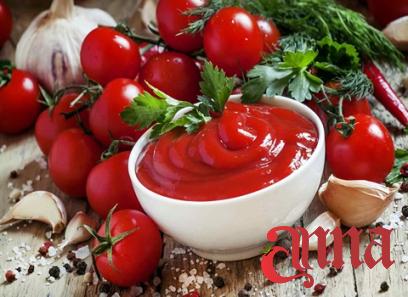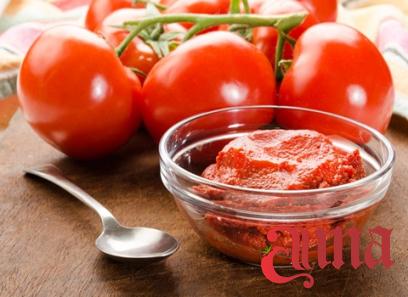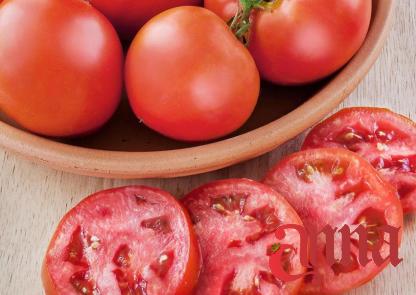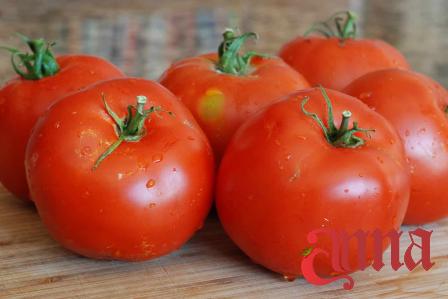Tomato paste is a staple ingredient in many culinary dishes, known for its rich, concentrated flavor. While store-bought tomato paste is readily available, nothing beats the taste and quality of homemade tomato paste. In this article, we will explore an efficient and straightforward method to make tomato paste quickly – saving you time, money, and adding that special touch to your favorite recipes. 1. Selecting the Right Tomatoes: Choosing the right variety of tomatoes is crucial when aiming for the best homemade tomato paste. Opt for ripe plum or Roma tomatoes, as they have less water content and a higher concentration of flavor. These tomatoes are also easier to peel, and their meaty texture gives the paste a smoother consistency.

.
 2. Prep Work: Start by washing and slicing the tomatoes into halves. Remove the stems and any blemishes, ensuring only the ripest parts are used. There’s no need for precision when slicing; larger chunks will break down during the cooking process. 3. Removing the Skin: To remove the tomato skins, blanch the tomato halves briefly in boiling water, for about 30 seconds. Transfer them immediately to an ice-water bath. This quick process helps loosen the skins, making them easy to peel off easily. 4. Extracting the Juice and Pulp: After skinning the tomatoes, gently press them with your fingers to remove any excess juice and seeds. Keep the seeds and juice aside, as they can be used later in sauces or stocks.
2. Prep Work: Start by washing and slicing the tomatoes into halves. Remove the stems and any blemishes, ensuring only the ripest parts are used. There’s no need for precision when slicing; larger chunks will break down during the cooking process. 3. Removing the Skin: To remove the tomato skins, blanch the tomato halves briefly in boiling water, for about 30 seconds. Transfer them immediately to an ice-water bath. This quick process helps loosen the skins, making them easy to peel off easily. 4. Extracting the Juice and Pulp: After skinning the tomatoes, gently press them with your fingers to remove any excess juice and seeds. Keep the seeds and juice aside, as they can be used later in sauces or stocks.
..
 5. Cooking the Tomato Puree: Place the prepared tomato halves into a large pot or pan, allowing them to cook over medium-low heat. The goal is to reduce the moisture content and concentrate the flavor. Stir occasionally to prevent sticking and ensure even cooking. This process can take a few hours, so patience is key. 6. Thicken the Paste: As the tomato mixture starts to thicken, use a potato masher or immersion blender to break down the tomato chunks further. This step will result in a smoother, uniform paste. Continue cooking until the desired consistency is achieved. 7. Seasoning: Once the tomato paste reaches the desired thickness, it’s time to add flavor. Season with a pinch of salt, a dash of sugar, and herbs like basil, oregano, or garlic, depending on your preference. These additions enhance the flavor and give your tomato paste a unique and personalized touch.
5. Cooking the Tomato Puree: Place the prepared tomato halves into a large pot or pan, allowing them to cook over medium-low heat. The goal is to reduce the moisture content and concentrate the flavor. Stir occasionally to prevent sticking and ensure even cooking. This process can take a few hours, so patience is key. 6. Thicken the Paste: As the tomato mixture starts to thicken, use a potato masher or immersion blender to break down the tomato chunks further. This step will result in a smoother, uniform paste. Continue cooking until the desired consistency is achieved. 7. Seasoning: Once the tomato paste reaches the desired thickness, it’s time to add flavor. Season with a pinch of salt, a dash of sugar, and herbs like basil, oregano, or garlic, depending on your preference. These additions enhance the flavor and give your tomato paste a unique and personalized touch.
…
 8. Storing and Using Tomato Paste: Allow the homemade tomato paste to cool completely before transferring it to clean, airtight containers. Store in the refrigerator for up to a week or freeze in smaller portions for longer shelf life. This way, you’ll always have tomato paste readily available whenever a recipe calls for it. Conclusion: Making your own tomato paste is not only a rewarding culinary experience but also a cost-effective and flavorful alternative to store-bought options. By following these simple steps, you can create a batch of quick homemade tomato paste that adds depth and richness to your favorite dishes. Experiment with different spices and seasonings to customize your paste to suit your taste buds. So why settle for ordinary when you can enjoy the unmatched taste of homemade tomato paste in a flash?
8. Storing and Using Tomato Paste: Allow the homemade tomato paste to cool completely before transferring it to clean, airtight containers. Store in the refrigerator for up to a week or freeze in smaller portions for longer shelf life. This way, you’ll always have tomato paste readily available whenever a recipe calls for it. Conclusion: Making your own tomato paste is not only a rewarding culinary experience but also a cost-effective and flavorful alternative to store-bought options. By following these simple steps, you can create a batch of quick homemade tomato paste that adds depth and richness to your favorite dishes. Experiment with different spices and seasonings to customize your paste to suit your taste buds. So why settle for ordinary when you can enjoy the unmatched taste of homemade tomato paste in a flash?











Your comment submitted.